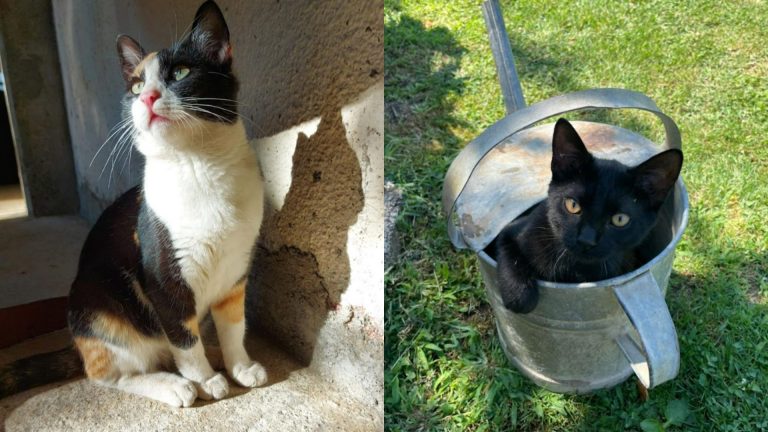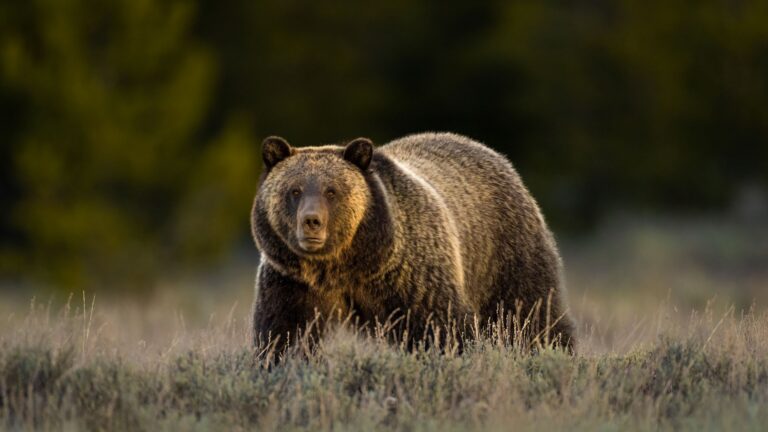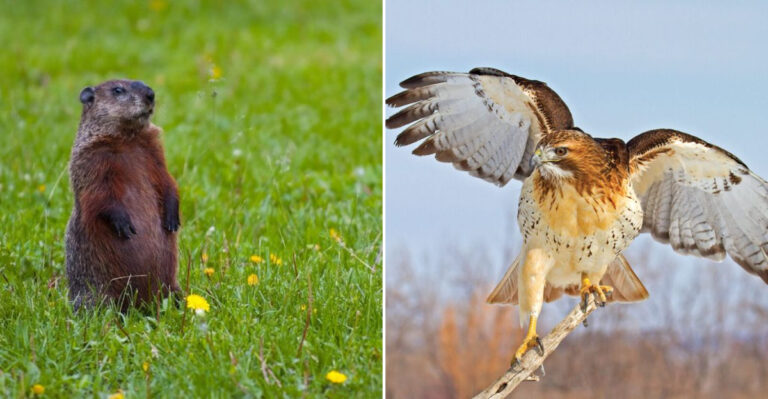These Are The Largest Insects In Alabama And Where You Can Find Them
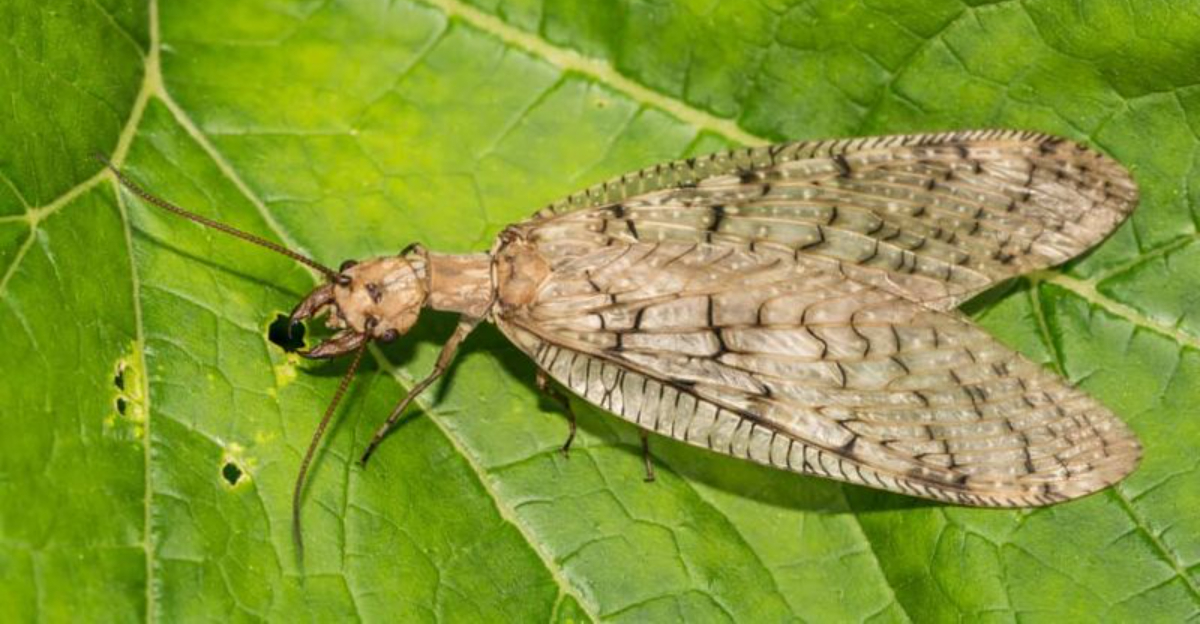
Alabama’s diverse ecosystems harbor some truly impressive six-legged creatures. From towering walkingsticks to menacing water bugs, these supersized insects might make your skin crawl or spark your curiosity.
Whether you’re an aspiring entomologist or simply enjoy nature’s wonders, knowing where to spot these remarkable bugs can turn an ordinary outdoor adventure into an unforgettable experience.
Giant Walkingstick
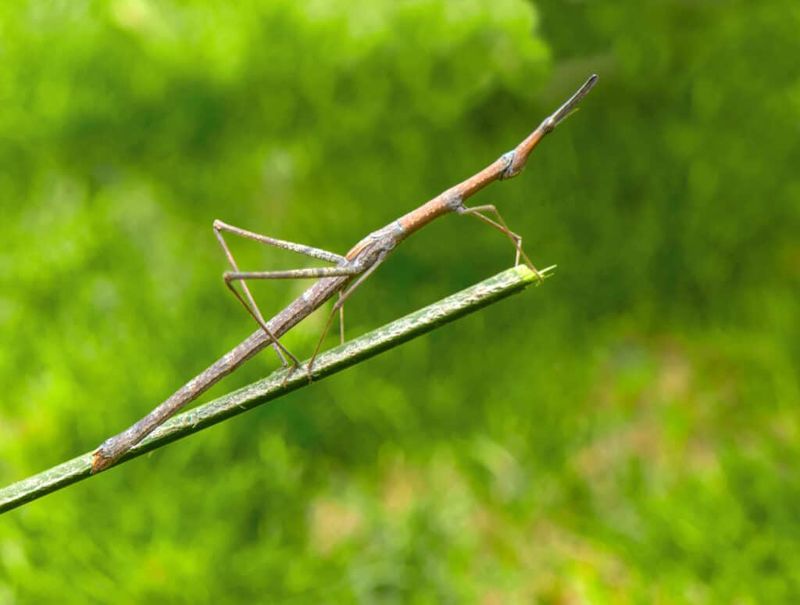
Resembling a twig come to life, these remarkable creatures hold the title of North America’s longest insect. Walking through Alabama’s oak-hickory forests might bring you face-to-antennae with one perfectly blended against a branch.
Patient observers might spot them from May through October, especially in the Bankhead National Forest. Their incredible camouflage makes them nearly invisible until they move!
Eastern Hercules Beetle
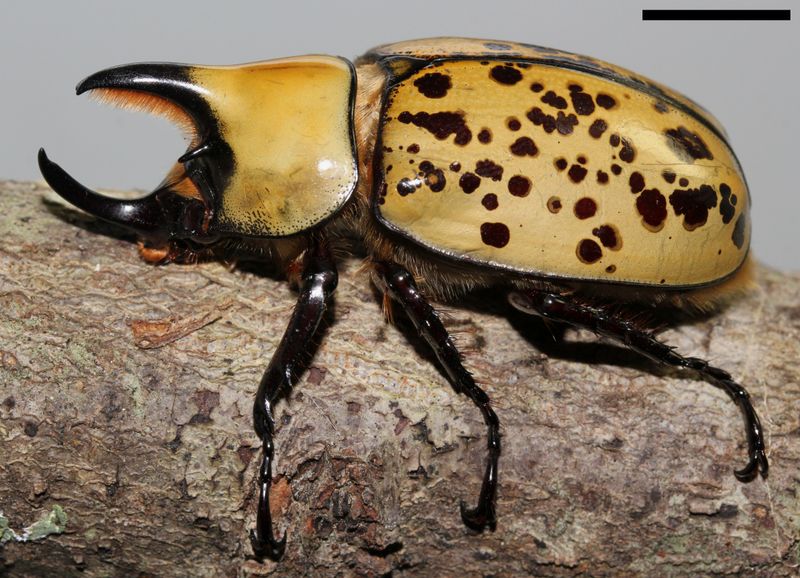
Marvel at this armored titan with impressive rhinoceros-like horns that males use in dramatic wrestling matches for female attention. Their striking yellow-spotted shells hide tremendous strength—they can carry 850 times their body weight!
Summer evenings in Alabama’s deciduous woodlands offer prime beetle-watching opportunities. Look for them around Monte Sano State Park or Oak Mountain where rotting logs create perfect breeding grounds.
Giant Water Bug
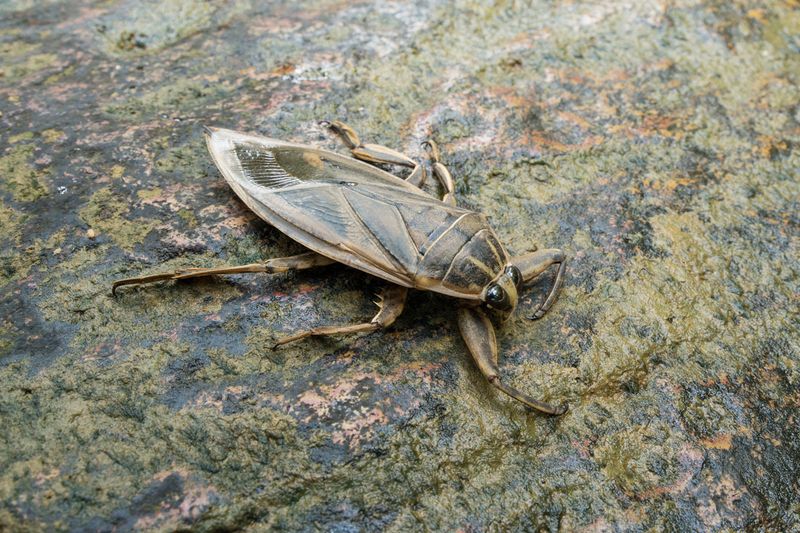
Nicknamed “toe-biters” for good reason, these aquatic hunters deliver one of the most painful insect bites in North America. Their flattened, oval bodies glide effortlessly through Alabama’s calm waters, ambushing everything from small fish to frogs.
Explore the Mobile-Tensaw Delta or Eufaula National Wildlife Refuge with caution—these predators lurk beneath lily pads during warm months. Their powerful front legs seize prey with lightning speed!
Wheel Bug

Sporting a distinctive cogwheel crest on its back, this imposing assassin bug stalks gardens and forests with deadly precision. Their bizarre appearance might startle you, but farmers welcome these beneficial predators that control pest populations.
Autumn walks through Cheaha State Park or Birmingham Botanical Gardens often reveal these hunters patrolling tree trunks. Admire from afar—their piercing proboscis delivers an unforgettably painful bite!
Hickory Horned Devil
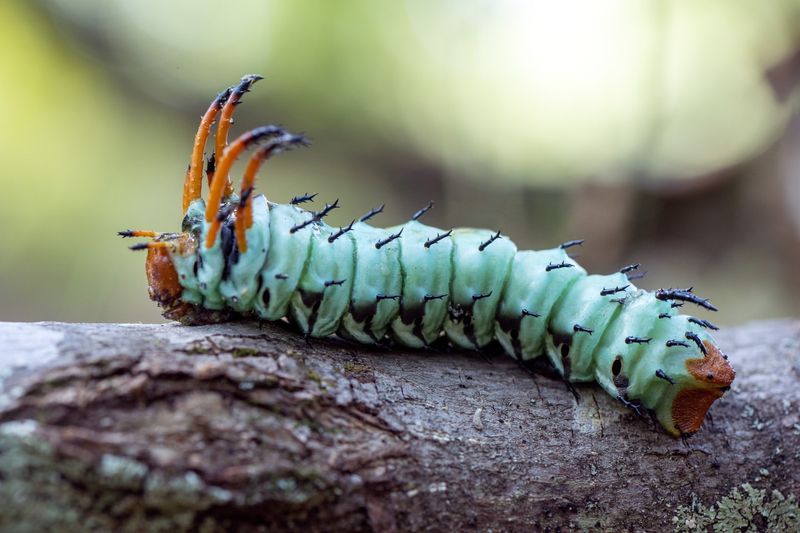
Frightening yet harmless, these electric-blue caterpillars bristle with intimidating orange spines that earned them their devilish name. Growing thicker than your thumb, they’re the largest caterpillars in North America!
Late summer explorations around Wheeler National Wildlife Refuge might reward you with these spectacular larvae munching on hickory foliage. After metamorphosis, they emerge as the magnificent regal moth with rusty orange wings.
Eastern Dobsonfly
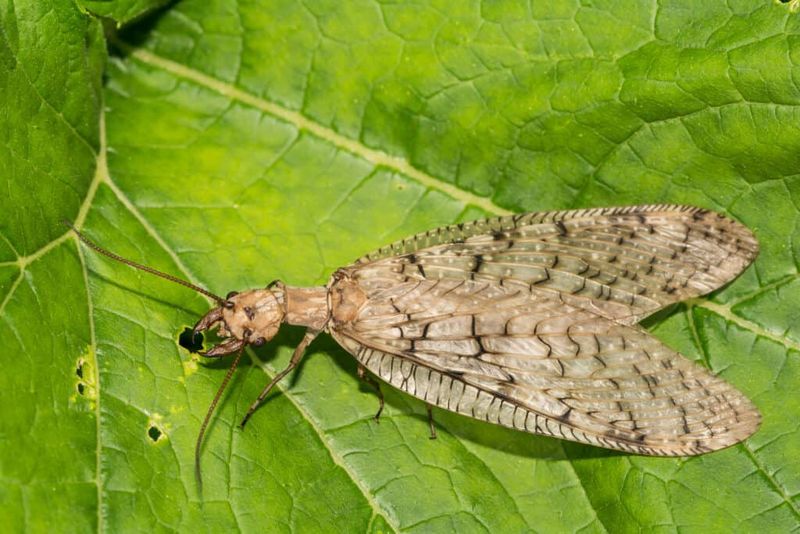
Male dobsonflies sport terrifying mandibles nearly one-third their body length—an intimidating sight along Alabama’s pristine streams. Despite their fearsome appearance, these mandibles serve mainly to impress females rather than for defense.
Creek-hopping adventures near Little River Canyon or Sipsey Wilderness might reveal these prehistoric-looking insects resting on streamside vegetation during summer months. Their aquatic larvae, called hellgrammites, are prized fishing bait among local anglers.
Giant Silk Moths
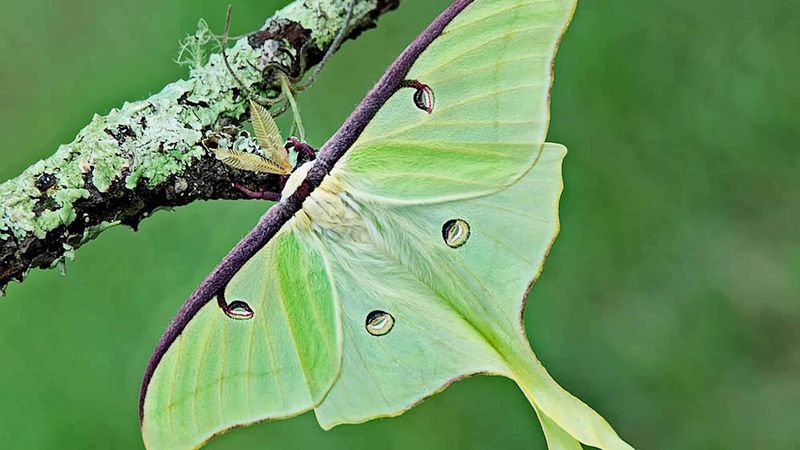
Alabama’s forests harbor these breathtaking nocturnal beauties with wingspans rivaling a human hand. Luna moths glow ethereal green, while cecropia moths showcase rich burgundy patterns that seem painted by a master artist.
Summer evenings near porch lights throughout the Talladega National Forest sometimes attract these short-lived marvels. Adults live barely a week—they emerge without functioning mouths, focused solely on finding mates before their brief existence ends.
Giant Red-Headed Centipede
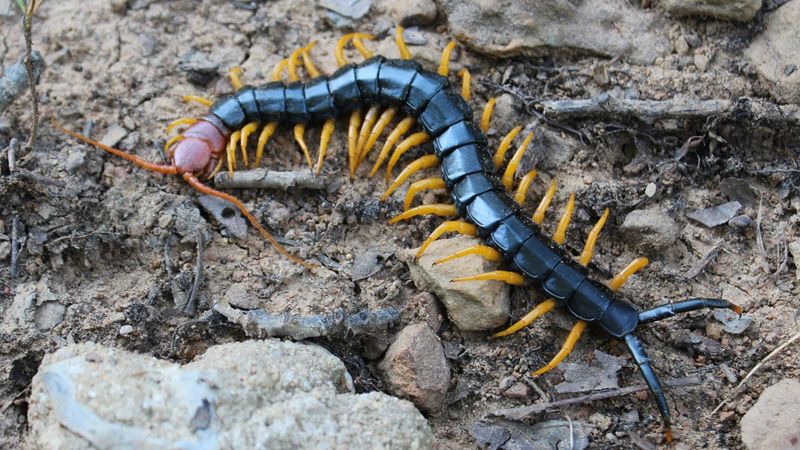
Technically not an insect but worthy of mention, these lightning-fast hunters flash warning colors of red and black as they patrol Alabama’s southern forests. Each of their 21 body segments carries a pair of legs that move in mesmerizing waves.
Exploring Gulf State Park’s wilder sections might reveal these formidable predators hunting beneath fallen logs. Their powerful venom immobilizes prey instantly, though human encounters remain rare in Alabama’s coastal regions.
Atlas Moth
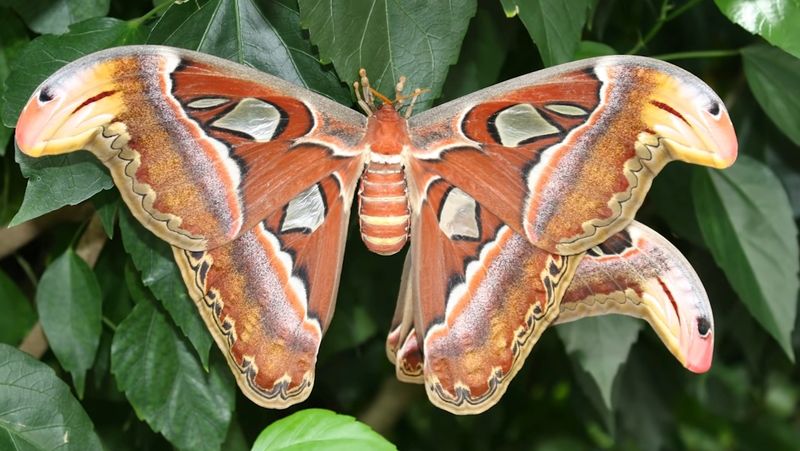
Occasionally spotted in Alabama’s butterfly houses and botanical gardens, these gentle giants boast wing tips resembling cobra heads—a clever defensive mimicry. Though not native, escaped specimens sometimes survive briefly in Alabama’s warm southern counties.
Birmingham’s butterfly pavilion occasionally features these magnificent creatures with wingspans approaching dinner plate dimensions. Their wings showcase intricate patterns in earthy browns and rusty oranges that seem hand-painted by nature’s finest artist.

